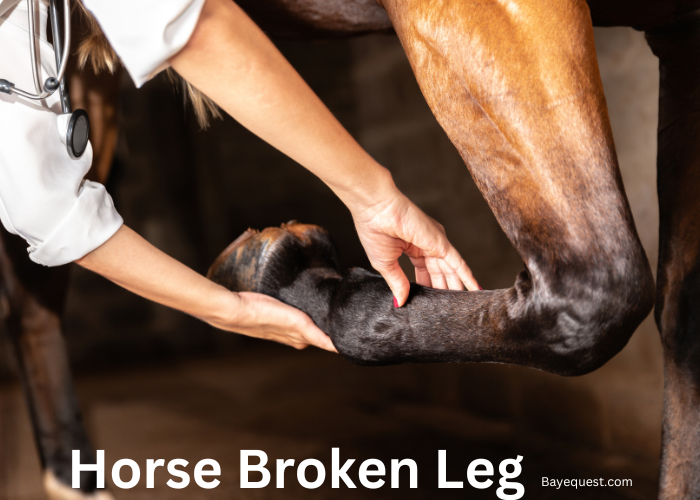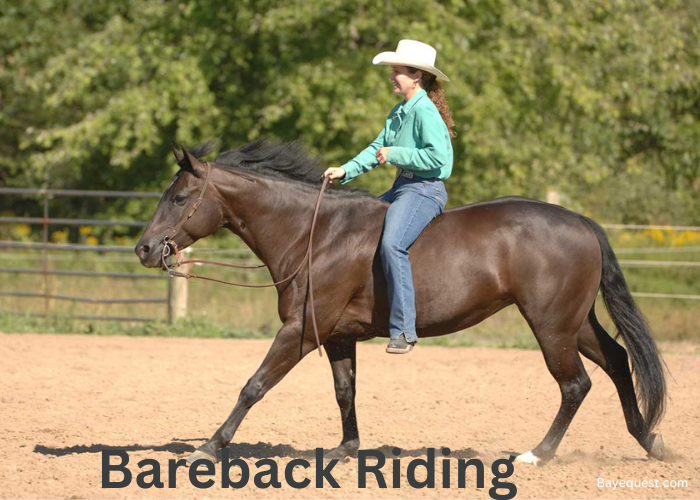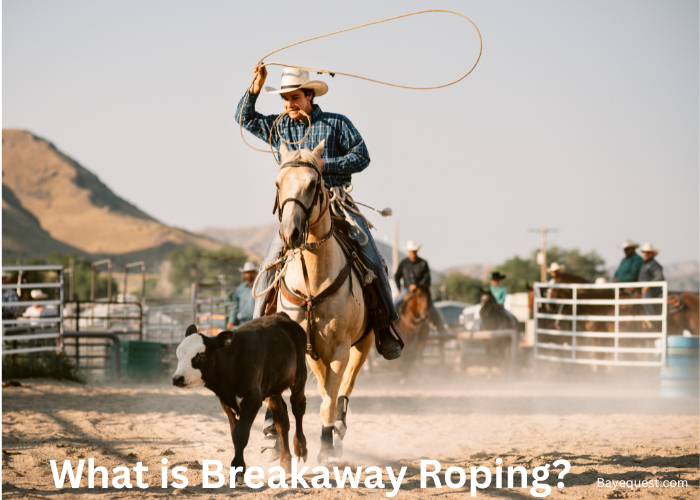It’s a hard sight to witness, a horse holding up one leg, eyes wide with pain. If you’ve ever owned or loved a horse, you know how quickly things can change.
One stumble, one bad landing, and suddenly, you’re facing something serious. A horse broken leg isn’t like a broken bone in people.
It’s complicated, emotional, and sometimes devastating. But there’s more to the story than just the injury.
In this blog, we’ll talk about what happens when a horse breaks its legs, why it matters so much, and what options exist when things go wrong.
How do Horses Break Their Legs?
Most leg breaks happen suddenly and often during normal activities.
Racing is one of the most common causes. Horses push their bodies to the limit at high speeds, and one wrong step can cause too much force for the bone to handle.
Jumping can also go wrong. If a horse lands awkwardly or clips a rail, the impact can twist or overload the leg.
But it’s not just high-impact sports. Horses can break a leg in the pasture, during play, or even while getting spooked and slipping on wet ground.
Sometimes, the bone was already weakened, maybe from stress fractures, age, or undetected disease. It just needed one final strain to give out.
The truth is, it can happen at any time. That’s why you need to know the signs and act fast.
Why is a Broken Leg so Serious in Horses?
Horses are big, heavy animals, some weighing over 1,000 pounds. Their legs, though strong, are built for speed and balance, not for healing heavy damage.
Unlike humans, horses can’t lie down for weeks to heal. They need to stand to eat, breathe properly, and keep blood flowing.
If they put too much weight on their other legs during recovery, they can develop a painful condition called laminitis.
That’s when the healthy hoof starts to fail, turning one problem into two.
The bone itself is also tricky. Some breaks are clean and simple.
Others shatter into pieces or pierce the skin. Those are harder to fix, and infection becomes a serious risk.
Even with surgery, recovery is long, expensive, and stressful for the horse.
Signs of a Horse With a Broken Leg
When a horse breaks its leg, the signs are usually clear and urgent. Here’s what to watch for:
Refusal to bear weight: The horse won’t step on the leg at all. It may keep it lifted or dangling.
Severe lameness: If it tries to walk, the limp is extreme and unnatural.
Swelling or deformity: The leg may look swollen, twisted, or bent at an odd angle.
Pain response: When you touch the area, the horse may flinch, pin its ears, or show distress.
Sweating or shaking: Pain and shock can cause visible stress, even if the leg looks normal at first.
Lying down and refusing to get up: A serious sign, especially if the horse is usually active.
What Happens When a Horse Breaks its Leg?
When a horse breaks its leg, everything changes in an instant.
First, the bone gives way, sometimes cleanly, sometimes in multiple pieces. The horse reacts fast, often lifting the leg, limping heavily, or refusing to move at all.
Then pain kicks in immediately. The horse might tremble, sweat, or breathe harder than usual.
If the bone pierces the skin, there’s also bleeding and a high risk of infection. The shock alone can be dangerous.
Because horses need to stand to stay healthy, the injury creates a ripple effect. Putting extra weight on the other legs can cause serious issues like laminitis.
That’s when a healthy hoof becomes inflamed and painful, sometimes worse than the original injury.
At this point, a vet is needed urgently. They’ll assess the break, manage pain, and decide if the leg can be saved.
Sadly, some breaks are too severe. But in other cases, surgery and months of care may offer hope.
Interesting read: Can a Horse Survive on 3 Legs?
What are the Immediate Steps After a Horse Breaks its Leg?
When a horse breaks its leg, every second counts. Staying calm and acting quickly will make a huge difference.
1. Keep the horse still. Don’t let it walk or move more than necessary, as movement can make the injury worse.
2. Call the vet immediately. Time is critical. Explain the situation clearly so they know it’s urgent.
3. Keep the horse calm. Speak softly. If it’s safe, gently hold the halter and reassure the horse. Stress can cause more damage.
4. Support the leg if trained to do so. In some cases, a splint or bandage may help stabilize the leg, but only if you know how. Otherwise, wait for the vet.
5. Keep the area safe and quiet. Remove any noise, people, or other animals. Reduce anything that might startle the horse.
6. Prepare for transport if advised. The vet may recommend taking the horse to a clinic. Don’t move the horse without proper help or equipment.
Can You Fix a Horse’s Broken Leg?
Yes. Sometimes. But it depends on the break.
Clean, simple fractures in the lower leg have the best chance of recovery. Recovery is possible with surgery, a cast, and lots of stall rest.
Modern veterinary medicine has come a long way. Vets can use plates, screws, or pins to stabilize the bone.
Some horses go on to live normal lives, even if they never race or compete again.
But not all breaks can be fixed. If the bone is shattered, if it breaks through the skin, or if it’s high up in the leg, the odds drop fast.
Those injuries are harder to stabilize. The risk of infection, complications, or intense pain makes recovery much tougher.
Even if surgery is an option, it’s expensive, risky, and heavy. Recovery takes months and requires constant care. Not every horse can handle that stress.
So yes, it’s possible, but not always practical. Each case is unique.
What matters most is the horse’s comfort, quality of life, and chance at a pain-free future.
Can a Horse Survive a Broken Leg?
Yes, a horse can survive a broken leg, but it depends on several things.
The chances are much better if the break is clean, low on the leg, and doesn’t involve the joints.
With proper surgery, rest, and round-the-clock care, some horses recover fully and live comfortable lives.
In fact, there are famous racehorses who’ve bounced back after a fracture, though they often retire from competition.
But not all cases end well. If the bone is shattered, if there’s a serious infection, or if the horse struggles to stand during recovery, survival becomes unlikely.
Horses aren’t built to lie down for long periods. Putting too much weight on the other legs can cause laminitis or even another injury.
So, while survival is possible, it’s not guaranteed. Vets look at the location of the break, the horse’s age and temperament, and how well it might handle a long, difficult recovery.
Sometimes, the kindest option is to let the horse go peacefully. It’s one of the hardest choices an owner can face.
Horse Limb Fracture Diagnosis
Diagnosing a limb fracture in a horse starts with a careful physical exam. The vet will first look at how the horse is standing and moving.
If the horse refuses to bear weight, has visible swelling, or shows intense pain, a fracture is strongly suspected.
The next step is palpation. Gently feel along the leg to locate heat, swelling, or abnormal movement. In some cases, this alone reveals where the bone may be broken.
To confirm the diagnosis, go for X-rays, which are the most reliable tool. They show the exact location, type, and severity of the break.
If the break is near a joint or not clearly visible on a standard X-ray, use ultrasound or CT scans.
In emergency situations, the vet may apply a temporary splint before imaging just to stabilize the leg.
Once the fracture is confirmed, the vet can decide whether surgery is possible or if the damage is too severe.
The diagnosis helps guide the next and often most difficult step in care.
Treatment Options for a Horse Broken Leg
Treating a broken leg in a horse depends on where the break is, how bad it is, and the horse’s age and overall health.
Some of the most common treatment paths are:
1. Stabilization and emergency care
The first step is always to stabilize the leg. A vet may apply a splint or bandage and give the horse pain relief and sedation.
This keeps the injury from getting worse while planning the next step.
2. Surgery
For certain types of fractures, especially clean breaks in the lower leg, surgery is possible.
Vets use metal plates, screws, or pins to hold the bone together. General anesthesia is required, and the horse must be closely monitored afterward.
3. Casting and stall rest
If the break is mild or surgery isn’t needed, the vet may use a cast. The horse will then need strict stall rest, sometimes for several months.
Recovery also includes limited movement, regular bandage changes, and pain management.
4. Rehabilitation
After the bone heals, physical therapy begins. That might include hand-walking, slow exercise, and eventually turnout in small paddocks.
The goal is to rebuild strength without re-injury.
5. Euthanasia (When necessary)
If the break is severe, involves a joint, or causes too much pain, euthanasia may be the kindest option.
It prevents prolonged suffering and complications like laminitis or infection.
Can a Horse Recover from a Broken Leg?
Yes, a horse can recover from a broken leg, but it’s not always guaranteed.
Recovery depends on the type of fracture, where it is, and how early it’s treated. Clean breaks in the lower leg, especially below the knee or hock, have the best chances.
With surgery, a supportive cast, and months of rest, some horses go on to live happy, pain-free lives.
But it’s not an easy road. Recovery takes time, money, and constant care.
The horse must stay off the injured leg, avoid stress on the other limbs, and fight off risks like infection or laminitis.
Older horses, or those with complex fractures, may struggle more. Sometimes, the emotional and physical toll is too great, even with the best care.
So yes, recovery is possible. But it’s rarely simple. Each case is different, and the decision to treat, or not, often comes down to what’s best for the horse in the long run.
How to Prevent Leg Injuries in Horses
While not all accidents can be avoided, there’s a lot you can do to reduce the risk of leg injuries in horses:
Provide safe turnout areas. Make sure pastures are free from holes, slippery mud, sharp objects, or loose wires. Good footing and solid fencing go a long way.
Warm up and cool down properly. Before any ride or workout, give your horse time to stretch and loosen up. After activity, cool down gradually to prevent muscle strain and stiffness.
Use protective leg gear. Wraps, splint boots, and bell boots can offer extra protection, especially during jumping, trailering, or heavy work.
Don’t overwork your horse. Avoid pushing your horse beyond its physical limits. Tired muscles and joints are more prone to injury.
Maintain a healthy weight. Too much weight adds pressure to the joints and bones. Proper diet and regular exercise keep your horse in good condition.
Schedule regular vet and farrier visits. Routine checkups help catch small issues before they become major problems. Correct shoeing also helps with balance and support.
Be aware of slippery or uneven surfaces. Traction matters in the barn, arena, or field. Keep walking areas clean, dry, and even.
Which Types of Fractures Can and Can’t Be Repaired in Horses?
Not all fractures are the same. In horses, the type and location of the break make all the difference.
Here’s a simple breakdown:
Fractures that can be repaired
1. Simple (Clean) fractures
- The bone breaks cleanly into two pieces.
- It’s easier to align and stabilize with surgery or a cast.
- Common in lower limbs like the cannon bone or pastern.
2. Incomplete or hairline fractures
- The bone is cracked but still intact.
- Can heal well with stall rest and support.
3. Some non-weight-bearing bones
- Like the splint bone or certain parts of the pelvis.
- These don’t carry much weight, so healing is more manageable.
4. Young horse growth plate injuries
- With early treatment, growing horses often recover well.
- Vets may use screws or wires to stabilize the area.
Fractures that can’t be repaired
1. Comminuted fractures
- Bone shatters into multiple pieces.
- Difficult or impossible to stabilize. Often involves major vessels or nerves.
2. Open (Compound) fractures
- Bone breaks through the skin.
- High risk of infection, shock, and poor healing.
3. High-up limb fractures
- Like the femur, humerus, or shoulder.
- Hard to immobilize due to the horse’s size and the lack of cast support.
4. Fractures involving joints
- Damage to joint surfaces often causes permanent pain and arthritis.
- Repair is extremely risky and rarely successful for long-term use.
Healing and Prognosis for Horse Limb Fractures
The healing process for a horse with a limb fracture is long and delicate. The prognosis also depends on several key factors.
These are:
Type and location of the fracture
Clean, low-leg fractures (like the cannon or pastern bone) tend to heal better. These bones are easier to stabilize with casts, screws, or plates.
But if the break is high up (like the femur or shoulder), shattered into pieces, or involves a joint, the prognosis becomes poor.
Age and temperament of the horse
Younger horses often heal faster and adjust better to stall rest. Calm horses also handle confinement and limited movement with less stress, which helps recovery.
Quality of veterinary care
Quick diagnosis, proper surgical repair, and good post-op care significantly improve the chances.
Modern techniques have saved horses that wouldn’t have survived 20 years ago.
Risk of complications
Even with the best care, horses are at risk of complications like:
- Laminitis in the opposite limb.
- Infection at the fracture or surgical site.
- Implant failure if the horse moves too soon.
These issues can delay or even prevent full recovery.
Timeframe for healing
Most horses need 3 to 6 months of stall rest. Full recovery, including physical therapy and light turnout, can take 6 to 12 months or more.
Horse Broken Leg: FAQs
Do you have to euthanize a horse if it breaks its leg?
Not always. Some horses can recover from a broken leg, especially if the fracture is clean and in a lower limb. But if the break is severe, involves multiple fragments, or causes extreme pain, euthanasia may be the most humane option.
Why do they put horses down because of a broken leg?
Horses are large animals that rely on all four legs to stand, eat, and stay healthy. When a leg breaks badly, it’s often too difficult to heal due to the horse’s size, the risk of infection, and stress on the other limbs. In such cases, euthanasia prevents prolonged pain and suffering.
Do horses break their legs easily?
Not exactly, but their legs are vulnerable. Horses are heavy animals with thin leg bones built for speed, not impact. A wrong step, high-speed injury, or awkward landing can lead to a serious fracture, especially in sports like racing or jumping.
What Happens When a Horse Breaks its Leg? Conclusion
A broken leg on a horse is never just a simple injury. It’s painful, risky, and often life-changing.
Some horses recover with care, surgery, and time, while others face harder outcomes. What matters most is acting fast, staying calm, and prioritizing the horse’s comfort.
If you own or care for a horse, knowing the signs and steps can make all the difference. Prevention, early treatment, and compassion go a long way.
And remember, every case is unique. When in doubt, trust your vet and do what’s best for the horse.








